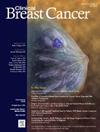Health Information on Breast Cancer Surgery on YouTube®
IF 2.9
3区 医学
Q2 ONCOLOGY
引用次数: 0
Abstract
Introduction
The quality, reliability and accuracy of health-related videos available online is controversial. Research has examined YouTube® in terms of reconstruction, breast screening, radiotherapy, postoperative arm exercises and mastectomy. The aim of this study is to assess YouTube® as a form of health information on breast cancer surgery/operation.
Methods
YouTube® was searched using the terms ``breast cancer surgery'' and ``breast cancer operation.'' Video data was recorded including time since upload, video length, viewer engagement, content and upload source. The quality, accuracy and educational usefulness of videos were analyzed using 3 online quality assessment tools by a single clinician. Gender and ethnic representation of the patient was recorded.
Results
About 48 videos were reviewed, 62% of videos uploaded from a Healthcare source and the most common video category was post-op complications/issues (25% of videos). Engagement was highest for videos uploaded from individuals which showed 54.36 “likes”/day and 6.9 comments/day. Healthcare sourced videos were higher quality. The mean DISCERN score for healthcare videos was 34.33 ± 11.44 compared with non-Healthcare scoring 26.33 ± 8.35 (P = .013). 100% of videos referenced females with breast cancer only. 71% showed only white/Caucasian patients/models.
Discussion
In line with previous research, this study showed Healthcare sourced videos were of higher quality. Quality of life information hasn't been reported elsewhere however this study found it was limited and of poor quality. While high levels of misleading information have been reported elsewhere, this study highlighted only 4% as misleading/unsafe.
Conclusions
Healthcare professional interaction with YouTube® should be encouraged and empowered, in order to educate with the delivery of high-quality health information which is reliable and valid. Quality of life content should be considered by healthcare professionals. This study highlights a paucity of videos on male breast cancer, and suggests the need for more ethnically diverse patient representation on breast cancer surgery/operation on YouTube.
求助全文
约1分钟内获得全文
求助全文
来源期刊

Clinical breast cancer
医学-肿瘤学
CiteScore
5.40
自引率
3.20%
发文量
174
审稿时长
48 days
期刊介绍:
Clinical Breast Cancer is a peer-reviewed bimonthly journal that publishes original articles describing various aspects of clinical and translational research of breast cancer. Clinical Breast Cancer is devoted to articles on detection, diagnosis, prevention, and treatment of breast cancer. The main emphasis is on recent scientific developments in all areas related to breast cancer. Specific areas of interest include clinical research reports from various therapeutic modalities, cancer genetics, drug sensitivity and resistance, novel imaging, tumor genomics, biomarkers, and chemoprevention strategies.
 求助内容:
求助内容: 应助结果提醒方式:
应助结果提醒方式:


